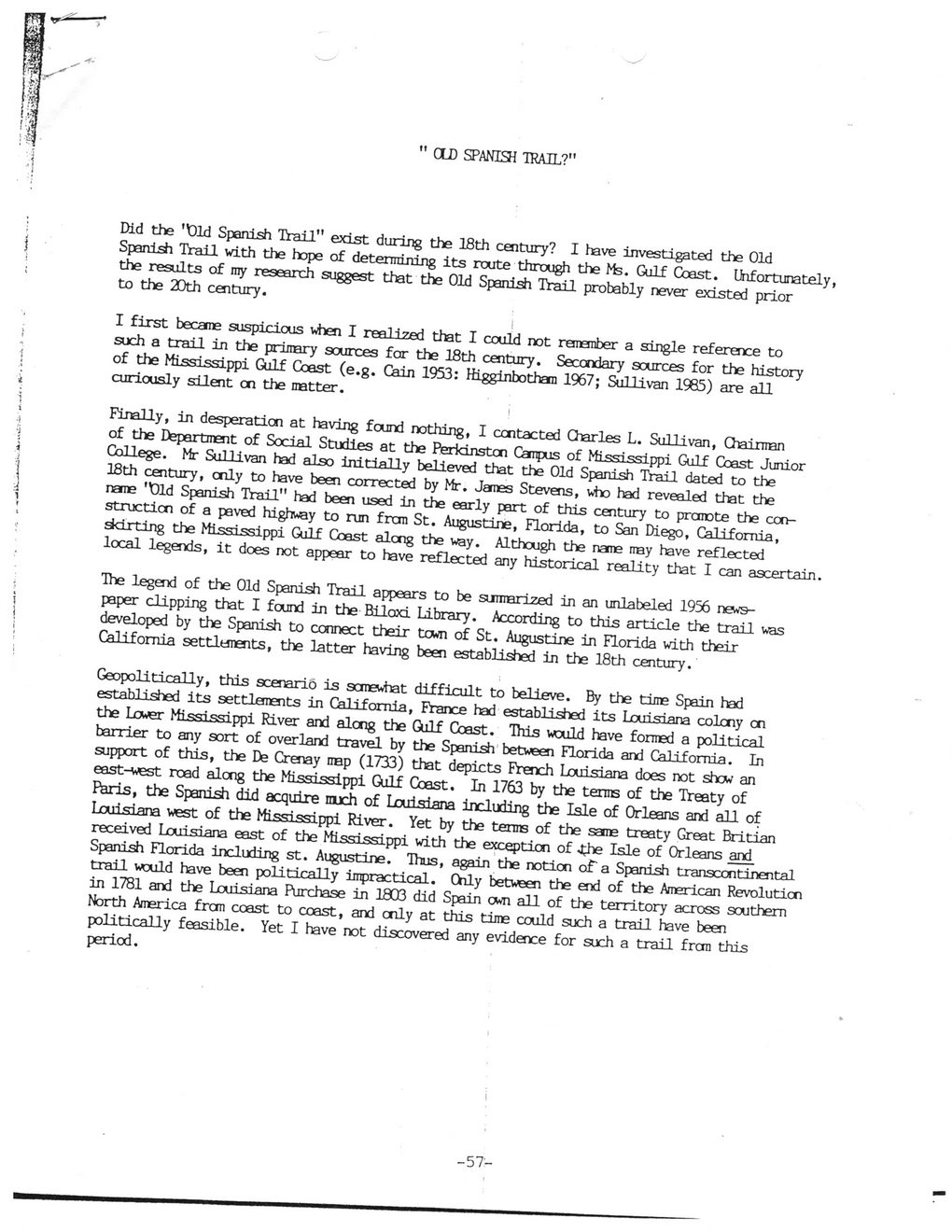This text was obtained via automated optical character recognition.
It has not been edited and may therefore contain several errors.
" OLD SPANISH TRAIL?" Did the ,'01d Spanish Trail" exist during the 18th century? I have investigated the Old Spanish Trail with the hope of determining its route through the Ms. Gulf Coast. Unfortunately, the results of my research suggest that the Old Spanish Trail probably never existed prior to the 20th century. I I first became suspicious when I realized that I could not remember a single reference to such a trail in the primary sources far the 18th century. Secondary sources for the history of the Mississippi Gulf Coast (e.g. Cain 1953: Higginbotham 1967; Sullivan 1965) are all curiously silent on the matter. ! Finally, in desperation at having found nothing, I contacted Charles L. Sullivan, Chairman of the Department of Social Studies at the Perkinstcn Carpus of Mississippi Gulf Coast Junior College. Mr Sullivan had also initially believed that the Old Spanish Trail dated to the 18th century, cnly to have been corrected by Mr. James Stevens, who had revealed that the name 't)ld Spanish Trail" had been used in the early part of this century to promote the construction of a paved highway to run frcm St. Augustine, Florida, to San Diego, California, darting the Mississippi Gulf Coast along the way. Although the name may have reflected local legends, it does not appear to have reflected any historical reality that I can ascertain. The legend of the Old Spanish Trail appears to be sunnarized in an unlabeled 1956 newspaper clipping that I found in the Biloxi Library. According to this article the trail was developed by the Spanish to connect their town of St. Augustine in Florida with their California settlements, the latter having been established in the 18th century. Geopolitirally, this scenario is scmewhat difficult to believe. By the tine Spain had established its settlements in California, France had established its Louisiana colony cn the Lcwer Mississippi River and along the Gulf Coast. This vrould have formed a political barrier to any sort of overland travel by the Spanish between Florida and California. In support of this, the De Crenay map (1733) that depicts French Louisiana does not show an east-west road along the Mississippi Gulf Coast. In 1763 by the terms of the Treaty of Paris, the Spanish did acquire much of Louisiana including the Isle of Orleans and all of Louisiana west of the Mississippi River. Yet by the terms of the same treaty Great Britian received Louisiana east of the Mississippi with the exception of «£he Isle of Orleans and Spanish Florida including st. Augustine. Thus, again the notion of" a Spanish transcontinental trail would have been politically impractical. Only between the end of the American Revolution in 1781 and the Louisiana Purchase in 1803 did Spain own all of the territory across southern North America frcm coast to coast, and only at this time could such a trail have been politically feasible. Yet I have not discovered any evidence for such a trail frcm this period. -57-

Old Spanish Trail Document (027)